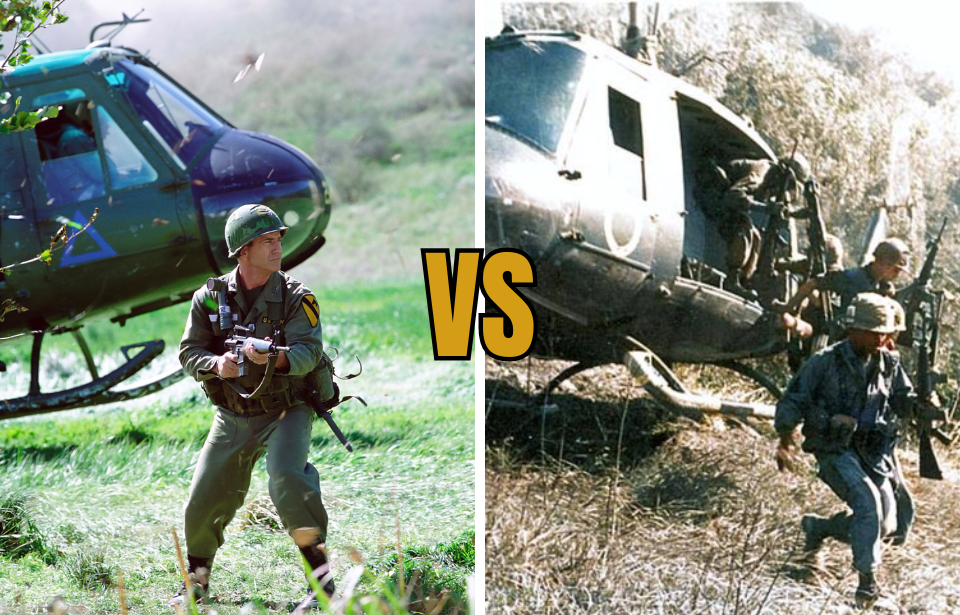The 2002 film We Were Soldiers is widely regarded as one of the most realistic depictions of the Vietnam War, due in large part to director Randall Wallace’s commitment to authentically portraying the Battle of Ia Drang. The film is based on the book We Were Soldiers Once… and Young, written by Lt. Gen. Harold G. Moore and journalist Joseph L. Galloway, both of whom were directly involved in the battle.
While the movie captures much of the intense combat and heroism of the battle, its ending was notably altered for dramatic effect. The film’s final scenes, which show the emotional return of the soldiers to their families, were enhanced for emotional impact, diverging from the real-life conclusion to better fit Hollywood storytelling conventions. Despite these changes, the film remains praised for its respectful and accurate portrayal of the brutal realities faced by soldiers during the battle.
What is We Were Soldiers about?
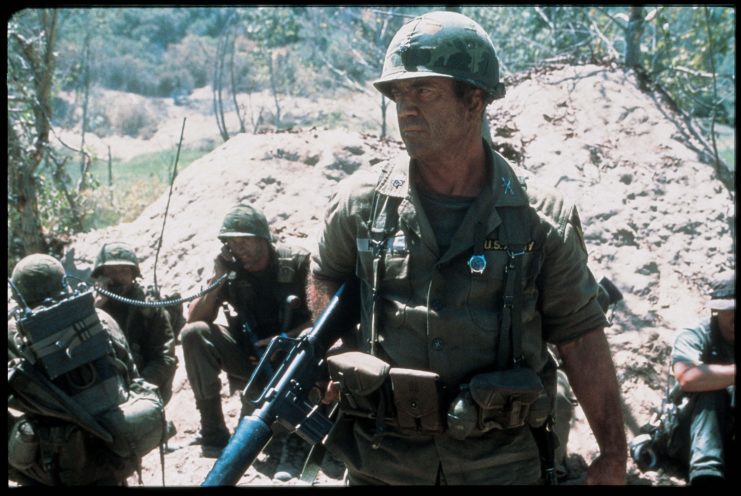
We Were Soldiers is based on the novel, We Were Soldiers Once… and Young: Ia Drang – The Battle That Changed the War in Vietnam, by renowned war correspondent Joe Galloway and Lt. Gen. Hal Moore. Both were present at the Battle of Ia Drang, the first large-scale engagement of the Vietnam War.
The film follows the experiences of both Moore, portrayed by Mel Gibson, and his wife, Julia, played by Madeleine Stowe. The former arrives in Vietnam in November 1965, and, soon after, is tasked with leading his 400 men in an effort to take out the enemy troops who attacked one of the bases in the Ia Drang Valley. Outnumbered when they arrive, the men are forced to fight for their lives while eliminating the 4,000-strong North Vietnamese force.
The secondary plot follows Julia, who volunteers to deliver telegrams informing families of their loved ones’ deaths in Vietnam.
The ending of We Were Soldiers
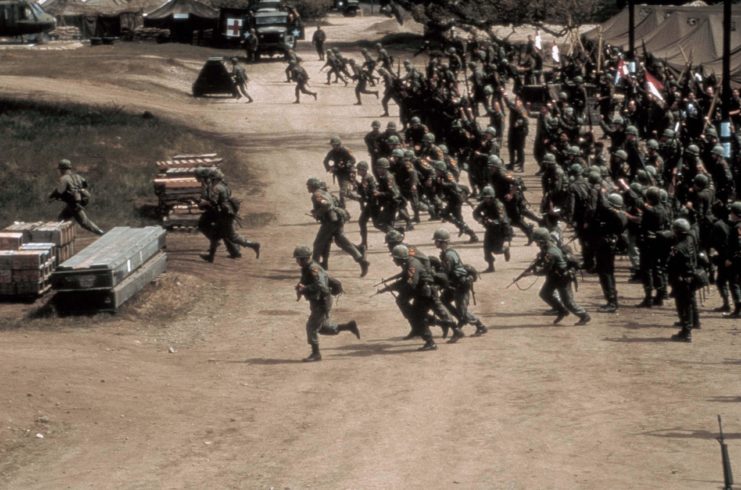
At the end of We Were Soldiers, Hal Moore orders a “Broken Arrow,” which is a call for immediate air support from every available aircraft when a unit is at risk of being overrun. The airstrike hits hard, taking a heavy toll on the Viet Cong and North Vietnamese Army (NVA). Unfortunately, it also causes friendly fire injuries among the American troops.
Still, the airstrike helps turn the tide, giving Moore’s unit enough of an advantage to regain control of the area.
The NVA launch one final counterattack, but Moore’s men beat them back and force them to abandon the base they had taken days earlier. With their mission complete, the American soldiers gather at the landing zone for extraction. Moore remains behind, refusing to leave until every one of his men—living or fallen—has been evacuated.
Soon after the Americans leave, the NVA return and retake the area. Moore continues his service in Vietnam, and after a year in combat, he finally returns home to his wife, Julia.
Battle of Ia Drang
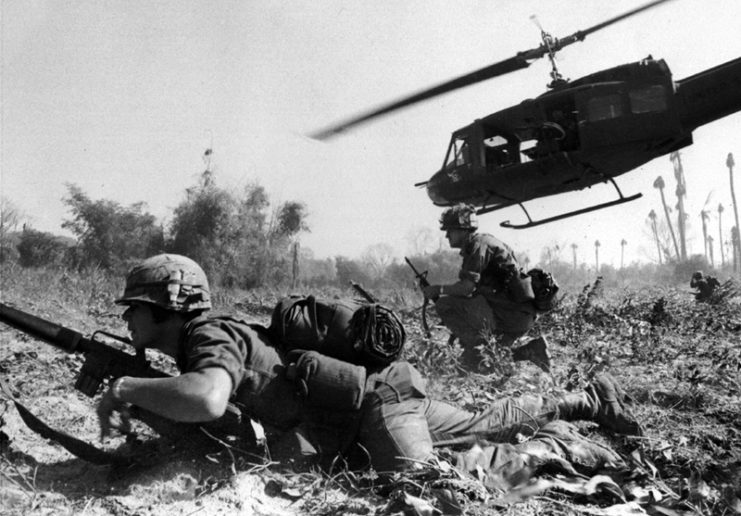
The actual Battle of Ia Drang occurred from November 14-19, 1965, and the intense fighting primarily centered around two key helicopter landing zones: LZ X-Ray and LZ Albany. The 1st Battalion, 7th Cavalry Regiment, under the command of Lt. Col. Hal Moore, was heavily engaged in combat at LZ X-Ray for three days starting on November 14, 1965.
While We Were Soldiers captures much of the battle’s intensity and bravery, the film deviates from the historical facts in its portrayal of the battle’s conclusion. In the movie, the battle ends with Moore’s forces successfully evacuating and completing a dramatic final charge. In reality, however, the battle didn’t officially conclude until LZ Albany was reclaimed by American forces, which marked the true end of the engagement.
Additionally, the majority of the 2nd Battalion, 7th Cavalry Regiment, led by Lt. Col. Robert McDade, didn’t enter the fight until after Moore’s forces had been relieved at LZ X-Ray. After Moore’s men were airlifted out, McDade’s battalion was reinforced by the 2nd Battalion, 5th Cavalry Regiment, and took over the fight to secure LZ Albany.
LZ Albany
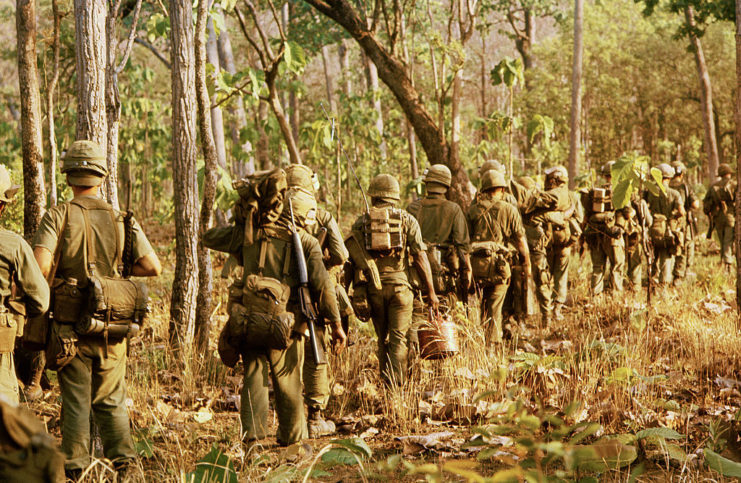
The next day, both battalions were warned that enemy bombers were headed toward LZ X-Ray, forcing them to move. The 2nd Battalion, 5th Cavalry Regiment marched toward LZ Columbus, while the 2nd Battalion, 7th Cavalry Regiment made their way to LZ Albany, capturing two North Vietnamese soldiers along the way. These prisoners were questioned by McDade, who, along with most of the battalion’s officers and radio operators, was called to a meeting to go over the gathered intelligence.
At the same time, the rest of the 2nd Battalion was left waiting with no communication. Exhausted from the battle at X-Ray, they were unprepared when hundreds of enemy troops slipped in unnoticed and launched an attack. The battalion heading to Columbus soon received word of the assault, leading Bravo Company to turn back to Albany as reinforcements. Their arrival helped push back the enemy, making it possible to evacuate the wounded.
Conclusion of the Battle of Ia Drang
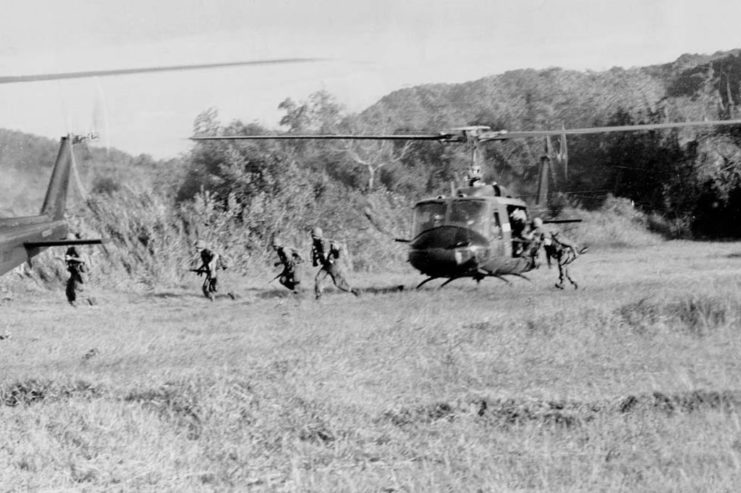
There were no further attacks overnight. On November 18, 1965, the US forces were able to gather their dead. Although the fighting had ended, the Battle of Ia Drang didn’t officially conclude until the next day, as it took two days to collect the bodies.
James Lawrence, one of the men who fought at LZ Albany, later recounted his experiences. He wanted to ensure the memories of those who died live on, in particular that of his best friend, Lt. Don Cornett.
Recalling the aftermath of the fight, he said, “Back then Stars and Stripes would carry the casualty reports and I had a red pen and started checking off the names of guys I knew who were listed as KIA. I marked off 65 names and that’s when it really hit me what had happened and it just overwhelmed me. I couldn’t grasp it.”
More from us: Val Kilmer Accidentally Landed Matthew Modine the Starring Role in ‘Full Metal Jacket’
Although it was left out of We Were Soldiers, Albany was no less bloody than X-Ray. Of the 500 men present as part of the 2nd Battalion, 7th Cavalry Regiment, 155 lost their lives, and just 84 were immediately able to return to active duty.
